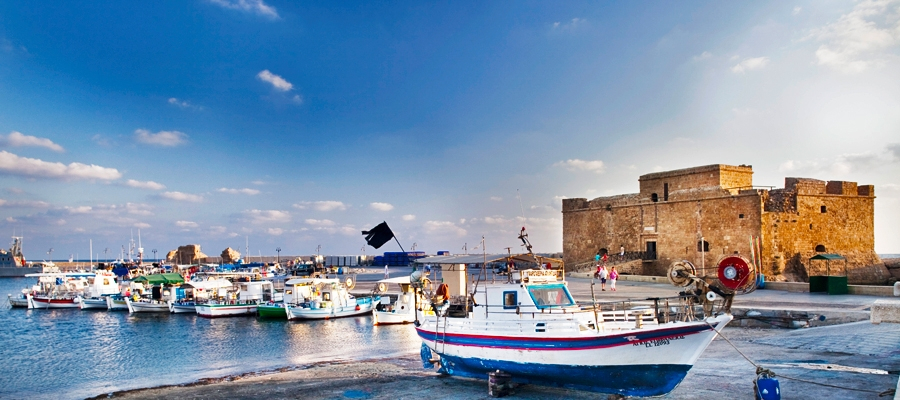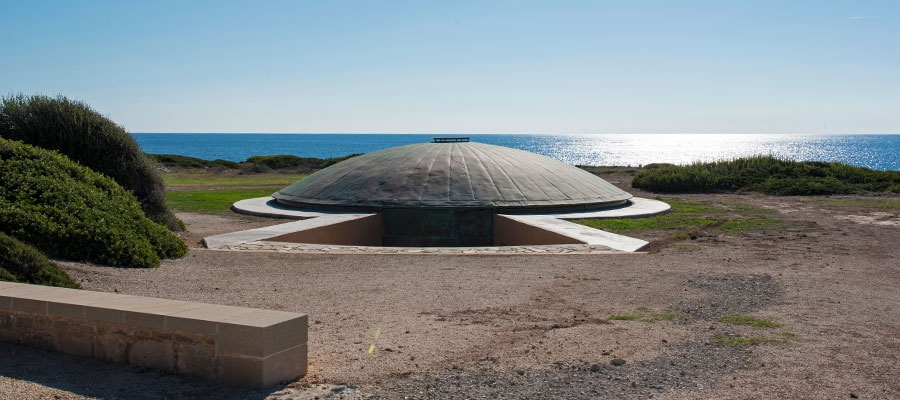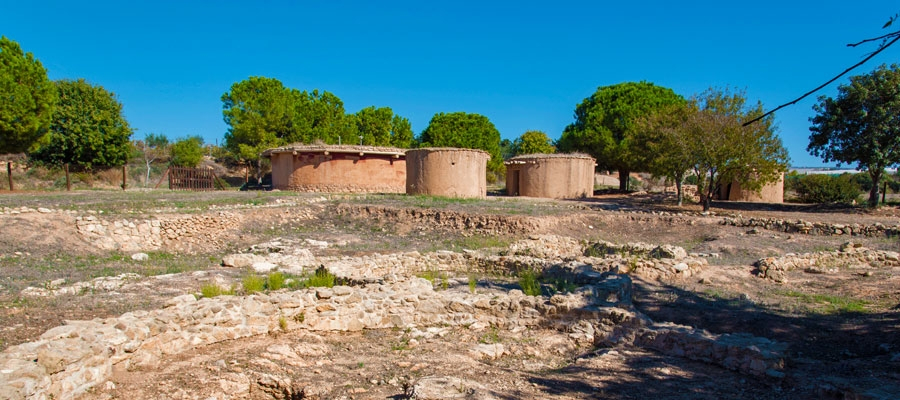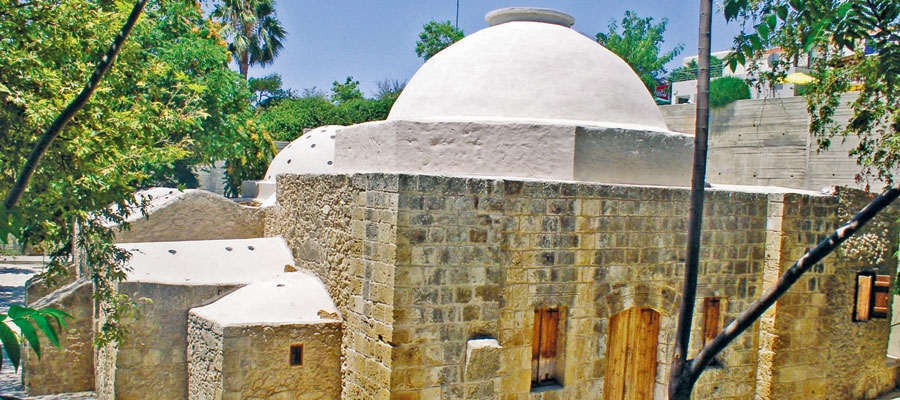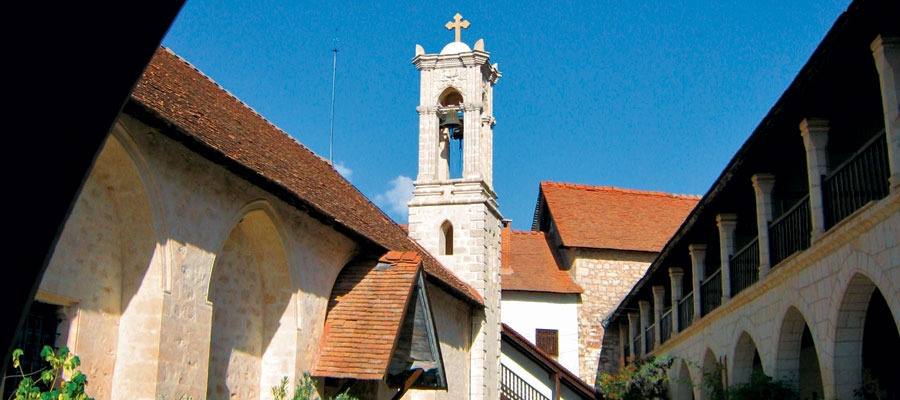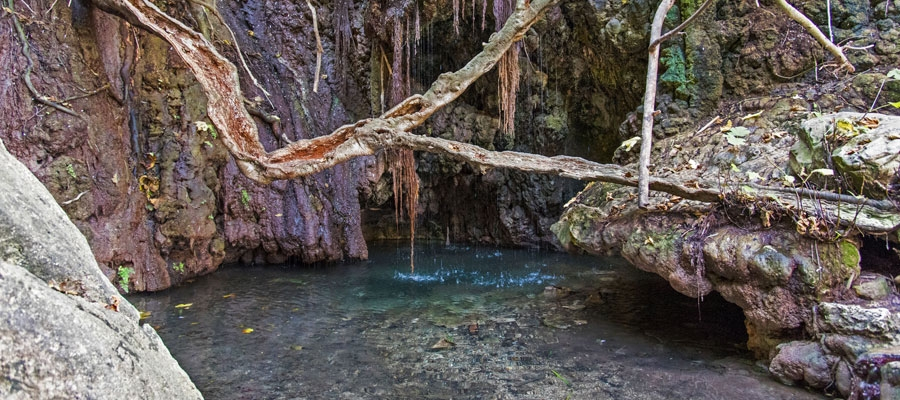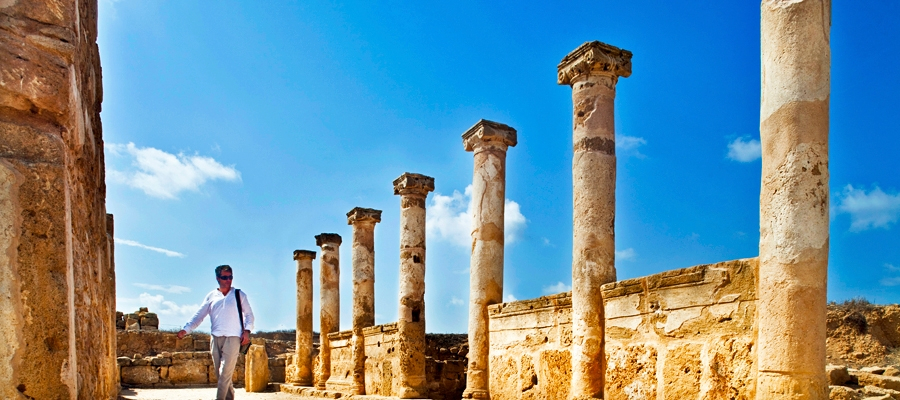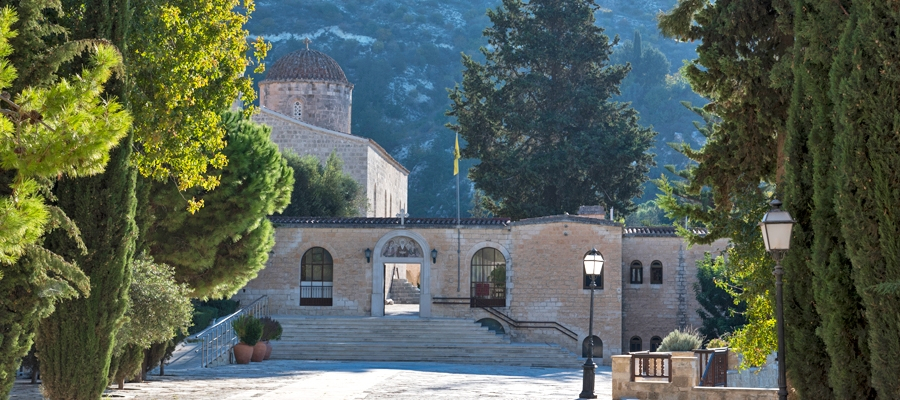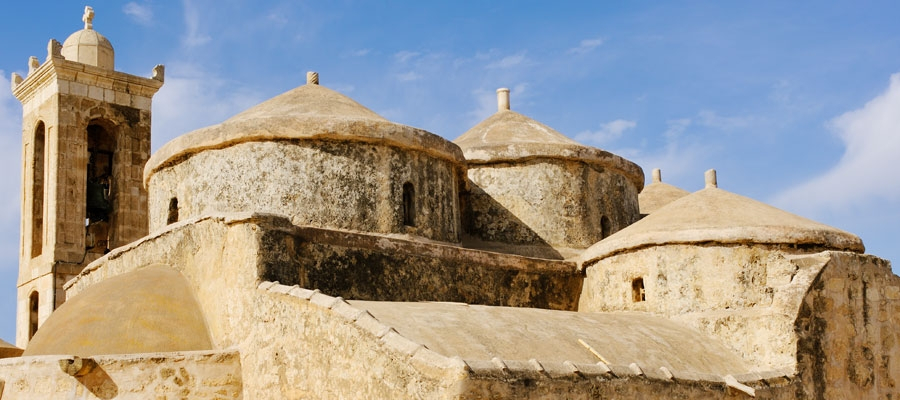Standing grandly at the west end of the town’s harbour, Pafos (Paphos) Castle (Medieval Fort) was originally a Byzantine fort built to protect the harbour, and was rebuilt by the Lusignans in the 13th century, but then dismantled by the Venetians. The Ottomans rebuilt it in the 16th century when they conquered the island. What survives today is the 1592 Ottoman restoration of the western Frankish tower with its Venetian additions. An inscription above the only entrance of the castle bears witness to this restoration.
The main part of the castle is a big square tower that has an enclosed courtyard in the middle. The ground floor consists of a central hall with small rooms on each of its two long sides, which were used as prison cells during Ottoman Rule. There are 12 battlements on the roof, which received a corresponding number of cannons. The Ottomans removed the cannons in 1878, when they handed over the administration of the island to the British, who used the castle as a salt store until 1935, when it was declared an Ancient Monument under the Antiquities Law.
The Medieval Castle of Paphos – Audio Guide
| Region: | Pafos |
| Address: | Harbour Area, Kato Pafos |
| GPS coordinates: | Lat: 34.753619 Lon: 32.406937 |
| Contact No: | Tel: +357 26 306 217 |
| Operating Hours: |
April 16 – September 15, daily: 08:30 – 19:30 September 16 – April 15, daily: 08:30 – 17:00 |
| Operating Period: |
All year round. Closed on Public Holidays. |
| Entrance Fee: |
€2,50 For organised groups consisting of more than 10 persons there is a 20% reduction on the entry fees. The Department of Antiquities can issue special entry cards for all its museums and ancient monuments: One (1) day entry cards – €8,50, three (3) day entry cards – €17,00, seven (7) day entry cards – €25,00. |
| Website: | www.mcw.gov.cy/da |
| Opening and closing times as well as entrance fees, are subject to alterations without notice. Visitors are advised to check before visiting. |

